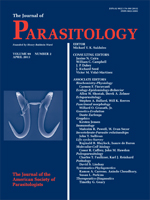We elucidate the life cycle of Maritrema orensense for the first time and experimentally confirm that of the sympatric Maritrema bonaerense. In Argentinean estuaries, both species parasitize the cochliopid snail Heleobia australis as first intermediate host, the grapsid crabs Neohelice granulata and Cyrtograpsus angulatus as second intermediate hosts, and gulls as definitive hosts. Here, we describe the daughter sporocysts and cercariae of M. orensense and redescribe these stages for M. bonaerense. Sporocysts of M. orensense are shorter, with fewer developed cercariae than M. bonaerense. The cercariae of M. orensense have longer, larger, and more undulating cephalic glands than M. bonaerense. We redescribe metacercariae and adults of both species and compare them with the previous descriptions. Intestinal ceca length, vitellaria shape and extension, and egg size are the most relevant characteristics in metacercariae and adults for differentiating the species. Hence, the detailed morphological description and comparative analyses of morphometrics obtained from natural and experimental infections permit clear differentiation of M. orensense and M. bonaerense at each life stage.
How to translate text using browser tools
1 April 2013
Maritrema orensense and Maritrema bonaerense (Digenea: Microphallidae): Descriptions, Life Cycles, and Comparative Morphometric Analyses
Pilar Alda,
Nicolás Bonel,
Ryan F. Hechinger,
Sergio R. Martorelli
ACCESS THE FULL ARTICLE

Journal of Parasitology
Vol. 99 • No. 2
April 2013
Vol. 99 • No. 2
April 2013




